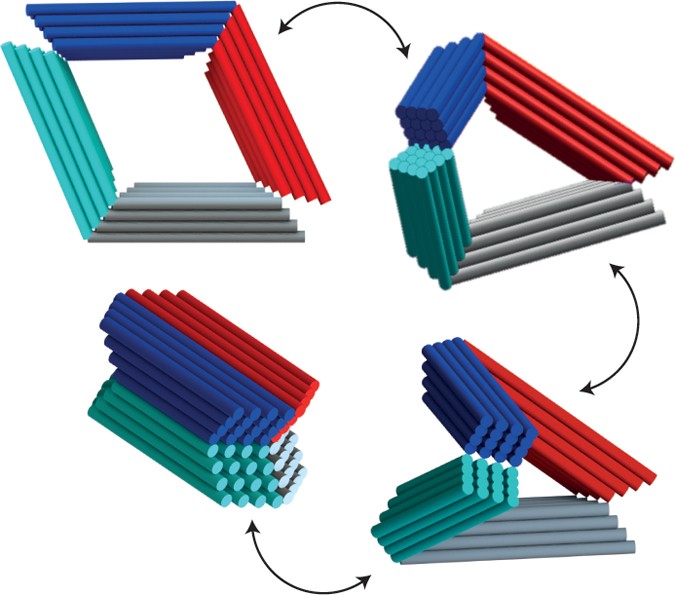
Our choice from the recent literature
- Select a language for the TTS:
- UK English Female
- UK English Male
- US English Female
- US English Male
- Australian Female
- Australian Male
- Language selected: (auto detect) - EN
Play all audios:
Access through your institution Buy or subscribe _Proc. Natl Acad. Sci. USA_ http://doi.org/x4p (2015) The researchers used a combination of stiff double-stranded DNA components and flexible
single-stranded components to first create origami joints capable of simple angular (a hinge) and linear (a slider) motion. These joints could then be integrated to form devices capable of
more complex motion such as a crank–slider, which uses three hinges and one slider joint, and a Bennett linkage, which uses four hinges and can transition between a compact bundle and an
open frame. Castro and colleagues also show that the Bennett linkage can be made to undergo reversible conformational changes using DNA input strands. _OV_ This is a preview of subscription
content, access via your institution ACCESS OPTIONS Access through your institution Subscribe to this journal Receive 12 print issues and online access $259.00 per year only $21.58 per issue
Learn more Buy this article * Purchase on SpringerLink * Instant access to full article PDF Buy now Prices may be subject to local taxes which are calculated during checkout ADDITIONAL
ACCESS OPTIONS: * Log in * Learn about institutional subscriptions * Read our FAQs * Contact customer support RIGHTS AND PERMISSIONS Reprints and permissions ABOUT THIS ARTICLE CITE THIS
ARTICLE Our choice from the recent literature. _Nature Nanotech_ 10, 102 (2015). https://doi.org/10.1038/nnano.2015.12 Download citation * Published: 05 February 2015 * Issue Date: February
2015 * DOI: https://doi.org/10.1038/nnano.2015.12 SHARE THIS ARTICLE Anyone you share the following link with will be able to read this content: Get shareable link Sorry, a shareable link is
not currently available for this article. Copy to clipboard Provided by the Springer Nature SharedIt content-sharing initiative